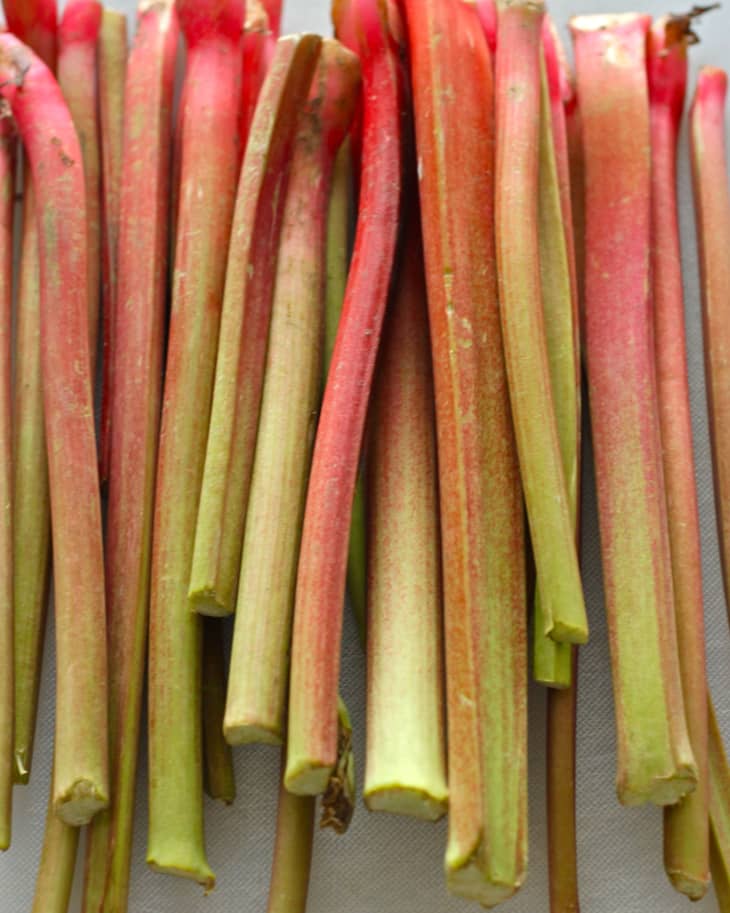What Is Rhubarb? Here’s What You Need to Know About This Spring Ingredient
My first experience with rhubarb was in the form of a wide slice of strawberry-rhubarb pie with a flaky crust and scoop of vanilla ice cream on top. I was in my teens and this pie may have been my first brush with love. I was mesmerized by the ping pong of sweet and tart flavors.
During the early months of spring there are few things that give me as much joy as rhubarb. Spring is when you’re most likely to find rhubarb at the grocery store or farmer’s market. That is peak rhubarb season, although it’s often available through summer. So let’s talk rhubarb basics and what you need to know.
What Is Rhubarb?
Rhubarb is a long, stalky plant that looks a lot like red celery. The stalks can range in color from deep red to light pink, and even pale green. As a plant, rhubarb is a perennial related to buckwheat. In a culinary context, rhubarb refers to the plant’s stalks.
Is Rhubarb a Fruit or a Vegetable?
Botanically speaking, Rhubarb is a vegetable. It doesn’t have any seeds and does not come from the flowering part of the plant. Instead, it’s the plant’s edible stem, making it a vegetable. However, once it leaves the garden and enters the kitchen it is most often prepared like a fruit.
What Does Rhubarb Taste Like?
Fresh, raw rhubarb has the crunch and fiber of celery and is bracingly tart. When cooked or baked with a lot of sugar the tartness mellows somewhat. According to the vendor at my local farmers market, despite subtle differences in sweetness, color doesn’t indicate a significant variation in the taste or freshness. However, the younger, thinner stalks are more tender and less fibrous than larger stalks.
Is Rhubarb Poisonous?
You may have heard that the rhubarb plant is poisonous. The stalks, of course, are not. However, the leaves contain oxalic acid so they are toxic. This is why rhubarb often sold with the leaves removed. If the rhubarb you buy has the leaves attached, remove these before preparing the stalks.
How to Buy Rhubarb
At the grocery store or farmers market, look for firm, crisp stalks that are blemish free. You also want to make sure the leaves (if they’re attached) appear fresh and not wilted. You can also sometimes find frozen packaged rhubarb at stores, though if you have the chance, you should definitely make the most of fresh rhubarb while it’s at its best.
How to Store Rhubarb
At home, you can store rhubarb unwashed, in the refrigerator for up to one week tops. Try loosely wrapping stalks of rhubarb in aluminum foil, place them in an open plastic zip-top bag, or you can use reusable food wraps, like ones from Bee’s Wrap. Alternatively, you can make rhubarb last longer by freezing it.
How to Use Rhubarb
If you’ve ever tasted raw rhubarb, you know that it’s very tart and quite stringy. There’s a good reason it’s most often served cooked or baked. Here are a few recipes to try this spring. You’ll also likely notice that rhubarb is very commonly paired with strawberries, like in this delicious strawberry-rhubarb pie. This is because their flavors complement each other well. Rhubarb is naturally sour while in-season strawberries can be quite sweet.
On the other hand, rhubarb can shine in savory dishes, like these skillet pork chops with rhubarb and brown sugar. Combined with pineapple it makes a tart, bracing salsa that goes well with fish tacos.
Rhubarb Recipes to Try This Spring
What’s your favorite rhubarb recipe?
